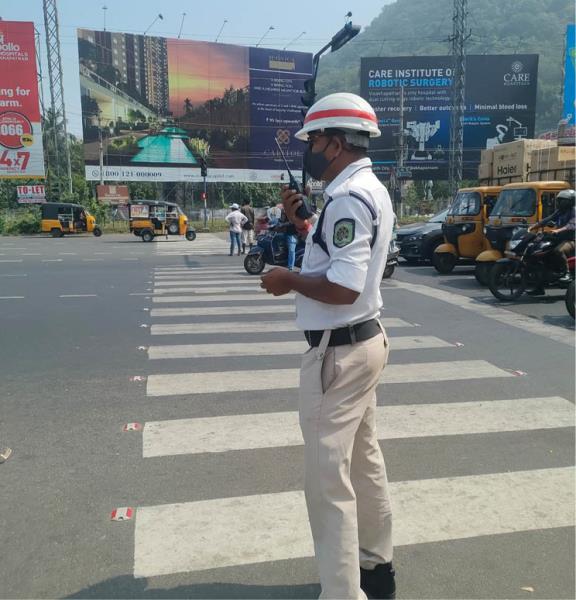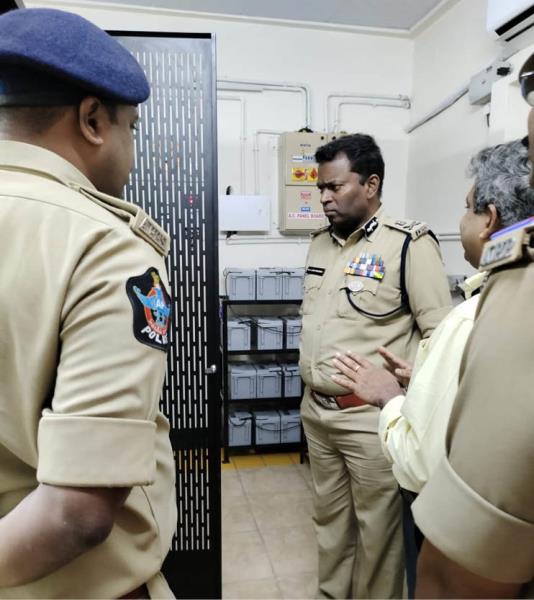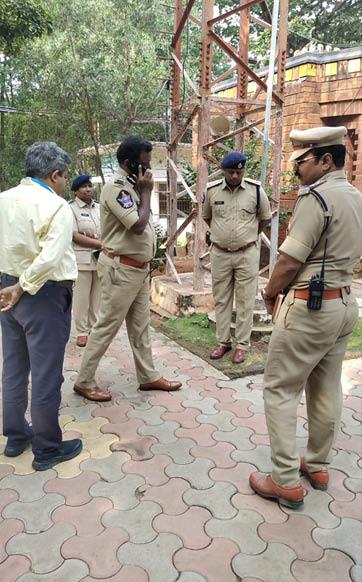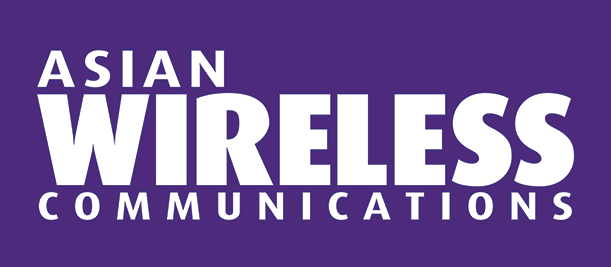11 April 2025

Sandra Wendelken, Market Insights Manager, Tait Communications
Public safety agencies in India and other countries depend on two-way radio communications for daily and incident communications. Digital land mobile radio (LMR) technology is particularly critical and ensures police officers, firefighters, and emergency management technicians can respond quickly and efficiently when emergencies arise.
P25 for public safety

One digital LMR standard that is particularly beneficial for public safety communications is Project 25 (P25) technology. Developed with state, local, and federal government representatives and Telecommunications Industry Association (TIA) governance, P25 has gained worldwide acceptance for public safety, security, public service, and commercial applications. Radio equipment that demonstrates compliance with P25 can meet a set of minimum requirements to fit the needs of users. In fact, the P25 standard was originally created for public safety professionals, although the technology is also used globally by utilities, transportation agencies, and other mission-critical infrastructure entities.
P25 systems can operate in conventional or trunked modes, with two phases of the technology. Phase 1 is based on Frequency Division Multiple Access (FDMA) technology and was designed to use the same bandwidth as a narrowband analog FM 25 kilohertz channel, meaning they could be used side by side, and narrowband FM channels could gradually be replaced by P25 digital channels.
P25 Phase 2 is based on Time Division Multiple Access (TDMA) technology and is more spectrally efficient than Phase 1, providing two effective channels per 12.5 kilohertz bandwidth. In P25 Phase 2, each physical base station provides two voice channels. With TDMA, two independent conversations share the same channel.
Another benefit of P25 Phase 2 is longer battery life. Because of TDMA, the transmitter is only working half the time during a transmission, therefore increasing the battery life of the portable. In addition, Phase 2, only available for trunked P25 operation, is backwards compatible with Phase 1 radios, allowing a new Phase 2 radio to operate with users of P25 Phase 1 equipment, and to operate on Phase 1 network equipment.
Customers can choose from multiple P25 system configurations including direct mode, repeated, single site, multi-site, voting, multicast, and simulcast systems. Optional features create cost-effective system applications and geographic coverage based on unique user requirements. Backward and forward compatibility considerations are built into the P25 standards and ease future system expansions and migration to new technology upgrades.
P25’s standardized interfaces

In a recent social media poll asking what the biggest advantage of open standards is in the critical communications industry, more than half (53%) of poll respondents said ‘interoperability.’ While other considerations including freedom of vendor choice, lower prices and avoiding technology obsolescence are important, interoperability is a huge issue for communications managers around the globe. Communication during disasters is rarely easy and often crosses different agencies and companies, involving several emergency networks. Interoperable communications systems are the key to keeping first responders safe and for the most effective and efficient response to incidents where mutual aid is required.
One way to address interoperability challenges is by purchasing standards-based equipment. The TIA TR-8 Working Group that oversees P25 standards updates the technology, with recent enhancements to security for example, and ensures it continually addresses first responders’ needs.
The P25 standard includes several interfaces to help ensure interoperability. The Common Air Interface (CAI) standardizes the point of connection between radio transmitters and receivers. Simply put, the CAI defines the technical form and function of the digital signal that goes over the airwaves and how P25 radios would communicate with one another at the most basic level. The CAI allows radios from Vendor A to operate on P25 infrastructure from Vendor B, for example.
Some other interfaces include the following:
The Inter-RF Subsystem Interface (ISSI) defines how different P25 radio networks can connect with one another—a key issue of communications interoperability. This effectively allows the full P25 system of Vendor A to be connected to the full P25 network of Vendor B, for example.
The Console Subsystem Interface (CSSI) allows the radio frequency (RF) components of a P25 system and command and control consoles to connect with one another.
The Fixed Station Interface (FSI) defines how components of a P25 radio system that are fixed in place connect with other components of the system. Dispatcher consoles are typically used to access fixed RF stations, so the CSSI and FSI are interdependent in most applications.
The P25 Compliance Assessment Program (CAP), overseen by the U.S. Department of Homeland Security (DHS), ensures interoperability between the equipment from the various P25 manufacturers. The program allows suppliers to publicly attest to their products’ compliance through P25 CAP testing at DHS-recognized laboratories. As proof, suppliers are required to submit test reports and other documents to confirm the testing. All the documents and lists of compliant equipment are housed on the P25 CAP website.
Also, as public safety agencies adopt broadband services to enhance their data connectivity, P25 systems can interoperate with commercial 4G/5G services. The 3GPP-compliant Inter Working Function (IWF) with authentication anchored on the respective core networks will support P25 and LTE interoperability.
The Indian market

Analog technology is still prevalent in India, but agencies see the value in investing in digital radio networks and devices when they update outdated equipment. More than 83% of the 2023 LMR terminal shipments in India were for digital technologies. As agencies replace older units and add new terminals to their equipment portfolios, P25 technology makes for a sound long-term investment as P25 radios are rugged and last more than a decade in most situations.
In line with the Indian government’s digitalisation plan, Captive Mobile Radio Trunking Services (CMRTS) organisations such as police, fire, and government security are upgrading to digital LMR networks for exclusive use. India is in ITU Region 3 where parts of the 406-470 frequency band and 4.94-4.99 GHz are harmonised for Public Protection and Disaster Relief (PPDR) applications. In addition, parts of the frequency range 806-894 MHz may also be considered for PPDR applications. The UHF and 800 MHz spectrum are a strong fit for P25 technology. PPDR agencies in other regions of the world including North America also use UHF and 800 MHz frequencies, providing a large ecosystem of manufacturers and partners that provide P25 products.
India has a quickly growing population, and its PPDR services must also grow quickly to ensure there is a safe environment for the country’s citizens. Both central (national) police forces and state police forces operate in the country. Both types of agencies have added personnel in recent years, and many rely on technology as a public safety resource to help the forces work as efficiently as possible. Not every police station in India has wireless communications but the trend is improving as more agencies deploy digital LMR systems.
As with most PPDR forces around the world, securing the necessary funding to buy communications equipment can be difficult. In an ideal world, every police officer would have a handheld device, and every police vehicle would be outfitted with a mobile radio. India has made strides in the number of handheld devices and mobile devices available in the field, but adding to the cache of available radios continues to be a priority for most agencies.
Indian P25 case studies
Two separate police agencies in India recently contracted for new P25 networks from Tait Communications. Rajasthan Police is a state police agency in the capital city of Jaipur, located near the center of India. The law enforcement agency replaced outdated analog technology with one of the largest P25 networks in the country. This upgrade will support thousands of portable, mobile and fixed radios to enhance its operations. Importantly, the trunked radio network also offers enhanced security and reliability. A dispatch system is integrated with the radio technology, which provides man down, lone worker, and location services.
The Bhopal Police, which helps ensure public safety in the capital city of the state of Madhya Pradesh, also updated its legacy mobile radio network with P25 Phase 2 technology. Bhopal, known as the City of Lakes because of the natural and artificial lakes near the city boundary, is the 16th largest city in India. The new P25 system is an end-to-end system including Tait controller and base station infrastructure, along with thousands of portable and mobile radios for use in police vehicles. The police force now has access to enhanced security through the trunked network’s voice recording, man down and lone worker features.
While investing in new digital technology can be expensive, there are alternatives in the market that provide cost-effective solutions. Agencies working with the right partners can ensure that the public money used for technology upgrades maximizes funding to achieve reliable critical communications networks with enhanced coverage and security at reasonable costs. As more natural disasters affect more communities worldwide, the reliability of P25 networks is an additional benefit.
Both Rajasthan Police and Bhopal Police understand the importance of standards-based digital LMR technology. The upgrades allow police officers to take advantage of mission-critical technology to enhance their daily and incident communications. The agencies have invested in a solution that will serve them for years, while also interoperating with other agencies and technologies.
With P25 gaining popularity across India, more public safety agencies are moving to the standard because of its many benefits. The P25 deployments will enhance interoperability across the country and ensure India’s law enforcement personnel can boost safety among the country’s citizens and communities.






